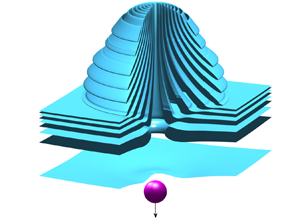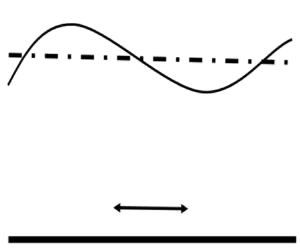Refine listing
Actions for selected content:
1418336 results in Open Access
Prognostic value of the Global Leadership Initiative on Malnutrition criteria including systemic inflammation in patients with advanced cancer
-
- Journal:
- British Journal of Nutrition / Volume 133 / Issue 2 / 28 January 2025
- Published online by Cambridge University Press:
- 08 January 2025, pp. 246-252
- Print publication:
- 28 January 2025
-
- Article
- Export citation
La surveillance : un instrument d’évitement de l'intrusion militaire dans le champ politique camerounais
-
- Journal:
- Canadian Journal of Political Science/Revue canadienne de science politique / Volume 57 / Issue 4 / December 2024
- Published online by Cambridge University Press:
- 08 January 2025, pp. 842-860
-
- Article
-
- You have access
- Open access
- HTML
- Export citation
Changes in juvenile hormone titres and differential expression of related genes at different stages of Coccinella septempunctata L. female adults supplied with an artificial diet and aphid diet
-
- Journal:
- Bulletin of Entomological Research / Volume 115 / Issue 1 / February 2025
- Published online by Cambridge University Press:
- 08 January 2025, pp. 32-38
-
- Article
- Export citation
Mega-fortresses in the South Caucasus: new data from southern Georgia
-
- Article
-
- You have access
- Open access
- HTML
- Export citation
Functions with small BMO norm
- Part of
-
- Journal:
- Proceedings of the Royal Society of Edinburgh. Section A: Mathematics , First View
- Published online by Cambridge University Press:
- 08 January 2025, pp. 1-15
-
- Article
- Export citation
Equivalences of stable categories of Gorenstein local rings
- Part of
-
- Journal:
- Canadian Mathematical Bulletin / Volume 68 / Issue 1 / March 2025
- Published online by Cambridge University Press:
- 08 January 2025, pp. 338-348
- Print publication:
- March 2025
-
- Article
- Export citation
The flow field due to a sphere moving in a viscous, density-stratified fluid
-
- Journal:
- Journal of Fluid Mechanics / Volume 1002 / 10 January 2025
- Published online by Cambridge University Press:
- 08 January 2025, A44
-
- Article
- Export citation
Beurling type invariant subspaces on Hardy and Bergman spaces of the unit ball or polydisk
- Part of
-
- Journal:
- Canadian Mathematical Bulletin / Volume 68 / Issue 1 / March 2025
- Published online by Cambridge University Press:
- 08 January 2025, pp. 232-245
- Print publication:
- March 2025
-
- Article
- Export citation
Uchenna Okeja. Deliberative Agency: A Study in Modern African Political Philosophy. Bloomington, IN: Indiana University Press, 2022. $30. Paper. ISBN: 9780253059918.
-
- Journal:
- African Studies Review / Volume 67 / Issue 4 / December 2024
- Published online by Cambridge University Press:
- 08 January 2025, pp. 1074-1076
-
- Article
-
- You have access
- HTML
- Export citation
The moth fauna is more diverse in the understorey than in the canopy in a European forest
-
- Journal:
- Bulletin of Entomological Research / Volume 115 / Issue 1 / February 2025
- Published online by Cambridge University Press:
- 08 January 2025, pp. 1-11
-
- Article
-
- You have access
- Open access
- HTML
- Export citation
Michael William Thomas dir. Cine-Addis. 2023. 39 minutes, Amharic with English Subtitle, Ethiopia. No price reported. The Screen Worlds Collective, available on Vimeo.
-
- Journal:
- African Studies Review / Volume 68 / Issue 1 / March 2025
- Published online by Cambridge University Press:
- 08 January 2025, pp. 220-221
-
- Article
-
- You have access
- HTML
- Export citation
Géographie politique de l'opinion publique québécoise et réévaluation du « mystère » de Québec
-
- Journal:
- Canadian Journal of Political Science/Revue canadienne de science politique / Volume 57 / Issue 4 / December 2024
- Published online by Cambridge University Press:
- 08 January 2025, pp. 816-841
-
- Article
-
- You have access
- Open access
- HTML
- Export citation
Louise Heren. Sex and Violence in 1920s Scotland: Incest, Rape, Lewd and Libidinous Practices, 1918–1930 History of Crime, Deviance and Punishment Series Editor Anne-Marie Kilday. London: Bloomsbury, 2024. Pp. 254, £85.00 hardback.
-
- Journal:
- Journal of British Studies / Volume 63 / Issue 3 / July 2024
- Published online by Cambridge University Press:
- 08 January 2025, pp. 720-721
-
- Article
- Export citation
Linear stability analysis of a thin liquid film on a horizontal wall under quasi-periodic oscillation
-
- Journal:
- Journal of Fluid Mechanics / Volume 1002 / 10 January 2025
- Published online by Cambridge University Press:
- 08 January 2025, A39
-
- Article
- Export citation
Local scale carbon stock measurements, including deep soil layers, in a terra firme forest in northwestern Amazon
-
- Journal:
- Journal of Tropical Ecology / Volume 41 / 2025
- Published online by Cambridge University Press:
- 08 January 2025, e2
-
- Article
- Export citation
On the binomial transforms of Apéry-like sequences
- Part of
-
- Journal:
- Canadian Mathematical Bulletin / Volume 68 / Issue 2 / June 2025
- Published online by Cambridge University Press:
- 08 January 2025, pp. 359-376
- Print publication:
- June 2025
-
- Article
- Export citation
ETS volume 45 issue 2 Cover and Front matter
-
- Journal:
- Ergodic Theory and Dynamical Systems / Volume 45 / Issue 2 / February 2025
- Published online by Cambridge University Press:
- 08 January 2025, pp. f1-f2
- Print publication:
- February 2025
-
- Article
-
- You have access
- Export citation
Effect of process parameters on the corrosion characteristics of friction stir welded aluminum alloy AA2014-T6
-
- Journal:
- The Aeronautical Journal / Volume 129 / Issue 1334 / April 2025
- Published online by Cambridge University Press:
- 08 January 2025, pp. 960-974
-
- Article
- Export citation
Foraging abilities and competitive interactions between two egg parasitoids of bagrada bug in California
-
- Journal:
- Bulletin of Entomological Research / Volume 114 / Issue 6 / December 2024
- Published online by Cambridge University Press:
- 08 January 2025, pp. 737-743
-
- Article
- Export citation
A characterization of the existence of zeros for operators with Lipschitzian derivative and closed range
- Part of
-
- Journal:
- Canadian Mathematical Bulletin / Volume 68 / Issue 2 / June 2025
- Published online by Cambridge University Press:
- 08 January 2025, pp. 395-400
- Print publication:
- June 2025
-
- Article
-
- You have access
- Open access
- HTML
- Export citation

























































